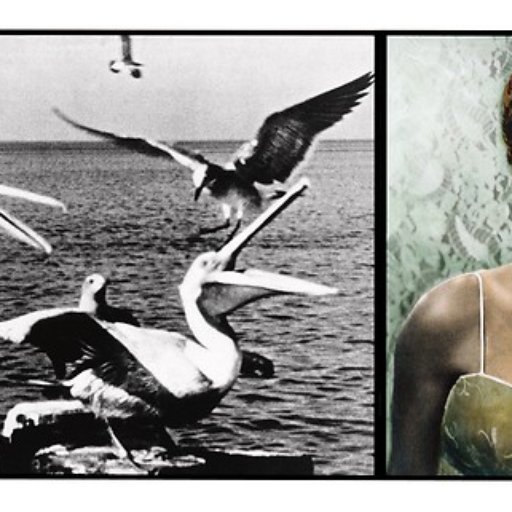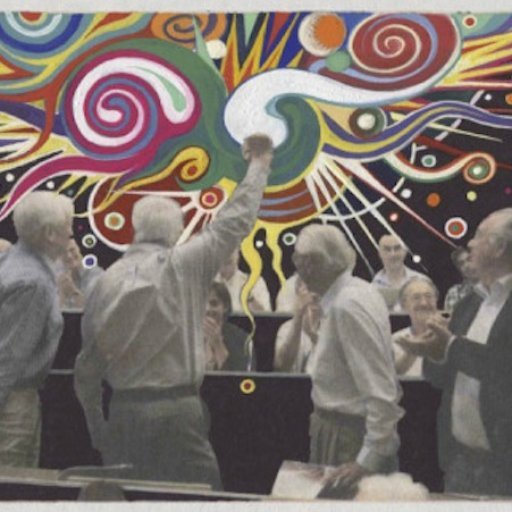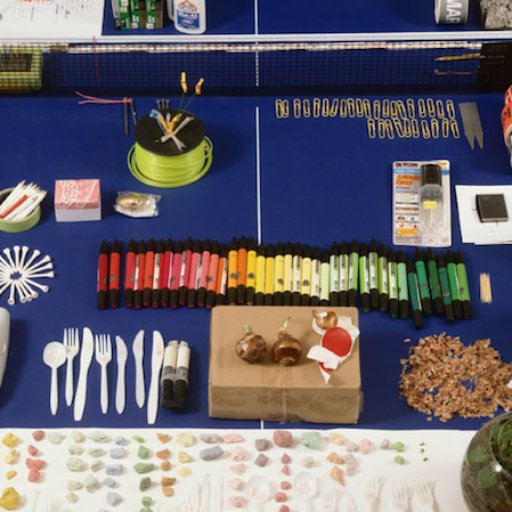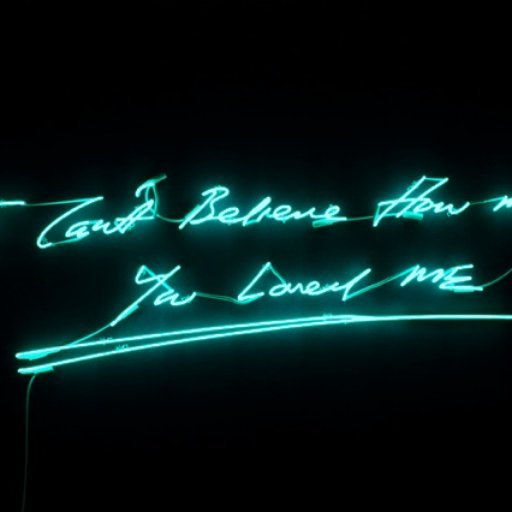The artist Jonathan Monk makes work that casts an arch eye on art history, his fellow artists, and the transition of a work from the studio to the gallery to the collector's wall or museum. In other words, his target is art and the entire artistic process, which he lampoons with wry humor and an unabashed use of appropriation—nothing is sacred, least at all himself. His work ranges from art objects that poke fun at our consumerism and love of iPhones to taking on heavyweight art-historical icons like Marcel Duchamp. Here, we take a closer look at the traits that define the slippery, playful, and extremely referential works of the British artist.
GOOD ARTISTS IMITATE...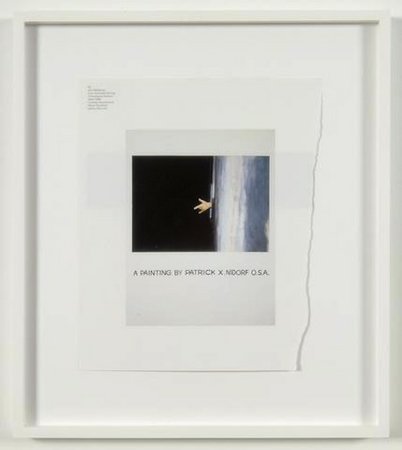 A Painting By Patrick X. Nidorf O.S.A. (2007)
A Painting By Patrick X. Nidorf O.S.A. (2007)
“I realized that being original was almost impossible,” Monk once said of his early days as an artist, “so I tried using what was already available as source material for my own work.” The artists he ended up turning to most often were Minimal and Conceptual artists like Lawrence Weiner, Sol LeWitt, and Bruce Nauman—no small feat, as their slippery, multifarious work would seem to be among the hardest to successfully emulate. His appropriation techniques even take on the masters of appropriation: for A Painting by Patrick X. Nidorf O.S.A. (2007), Monk used a reproduction of one of John Baldessari's 1969 "Commissioned Paintings," further tangle questions of authorship. Not even Jeff Koons's immaculate sculptures, which are often seen as critic-proof due to their gleaming emphasis on empty surface and vague allusions, are safe: one of Monk’s most famous works is his “Deflated Sculpture” series, which literally takes the air out of Koons’s famous metallic rabbit balloon animals by re-sculpting them as deflated, sad-looking versions that get increasingly deflated as the series progresses.
WHO'S YOUR DADA?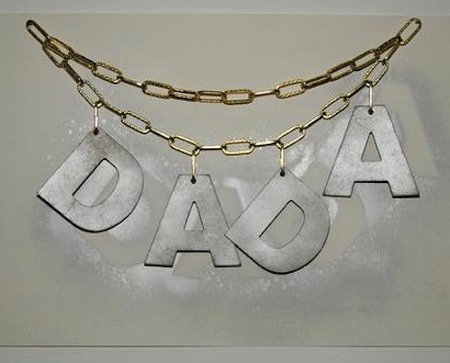 DADA NECKLACE (2012)
DADA NECKLACE (2012)
Monk's subjects are wide-ranging, equally making use of past and present. In DADA NECKLACE (2012) he looks to Marcel Duchamp, father of the readymade, who in 1921 suggested to Tristan Tzara that they create necklaces or bracelets with the letters D-A-D-A stamped in metal as talismans to protect them. (The word came to be synonymous with the anti-bourgeois "nonsense" art that emerged in Europe as an outcry to the senseless devastation of World War.) Monk went a step beyond and realized the project as a flashy form of contemporary "bling," affixing the necklace to a canvas in tongue-in-cheek homage to the art movement that forged a precedent for his own absurdist, satirical approach.
SENSE OF HUMOR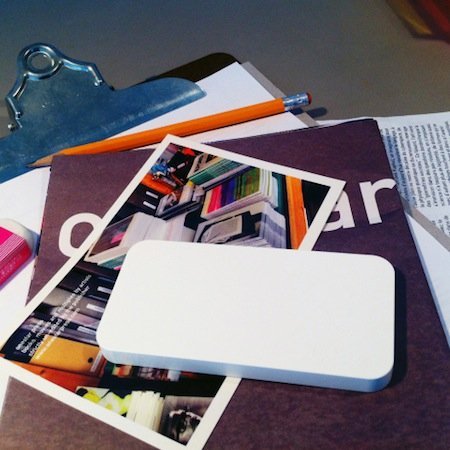 Call Weighting Paper (2012)
Call Weighting Paper (2012)
Monk doesn't only gets his kicks from appropriation—he also makes poetical jokes with his installations and sculptures. In Call Weighting Paper (2012) he created a white bronze paperweight in the shape of the omnipresent iPhone as a commentary on the ubiquitous, continually updated status symbol and luxury item. The pun in the title itself, meanwhile, reveals the artist’s sly manipulation of language in his work. Another piece, America Held Up Through New York (2010), at first just looks like a piece of limp leather tacked to the wall: on closer look, one can see it is in fact a map of the United States, cut from leather and pinned up by its Northeastern side, rendering the shape of the country unrecognizable.
TEXT-BASED WORK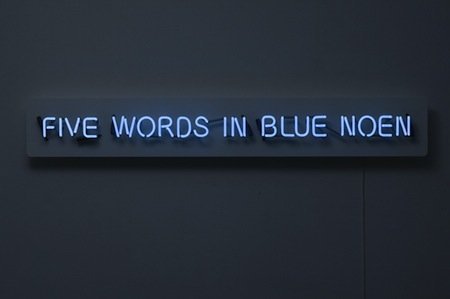 Neon Piece With Spelling Mistake (2004)
Neon Piece With Spelling Mistake (2004)
Like any good comedian, Monk is the master of the one-liner, and that is especially apparent in his text works—though they often reveal themselves to have subversive secondary connotations beneath the surface. The artist particularly enjoys implicating the viewer in both politics of the gallery and art history through his highly referential text pieces. “DO NOT PAY MORE THAN $20,000” a neon work of that title admonishes its prospective collector; Neon Piece With Spelling Mistake (2004) is what it sounds like, as the lighted blue text reads, “FIVE WORDS IN BLUE NOEN.” This painting Should Ideally Be Hung Near a Sol LeWitt (2004), meanwhile, is simply a white painting printed with a black text reiterating the title—puckishly placing the work in dialogue with LeWitt's Conceptualism without providing a good reason for doing so. And in Stupid (1997), a cheery, cartoonish flower is filled in with cutesy text wrapped around the center, reading “a stupid waste of time” and “it’s all a waste of time.” The picture seems to be making fun of itself.
THE ARTIST AS SUBJECT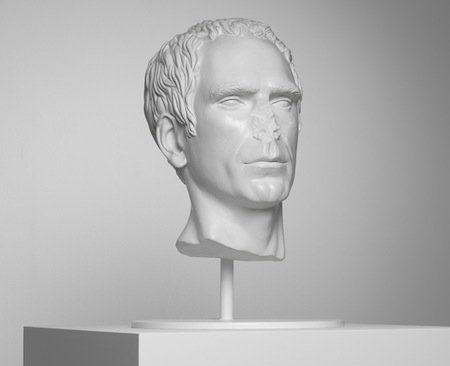 Senza Titolo III (2012)
Senza Titolo III (2012)
Monk not only takes aim at other artists, the viewer, and the art world: he also often makes himself the target. In one art project, Business Card (2008), the artist created business cards to be passed out that simply bore his birth year, hometown, and name, with the tagline “Artist.” In As Yet Untitled V (2001), he creates a version of a tombstone reading “YOUR NAME HERE”—but is it ours or the artist’s own that he means? For his celebrated 2005 show at the ICA London, he created Continuous Project Altered Daily, a book that documented the process of the exhibition, becoming an art object in its own right. Monk is hardly shy about using his own likeness in his art either. For a recent body of work, the artist had his own head sculpted in marble in the style of ancient Roman imperial busts (complete with a chipped-off nose), and for his 2009 show “Rew-Shay Hood Project Part II” at Artpace, he went as far as to sit down in the exhibition's galleries to receive a haircut. Say what you want about his appropriation, the artist clearly puts himself in his work.
















